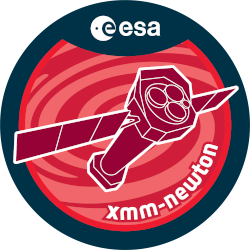

| Proposal ID | 088355 |
| Title | Too B or not too B: the quest for the PULX accretion |
| Download Data Associated to the proposal | https://nxsa.esac.esa.int/nxsa-sl/servlet/data-action-aio?obsno=0883550101 |
| DOI | https://doi.org/10.57780/esa-o4oqdhf |
| Principal Investigator, PI | Prof GianLuca Israel |
| Abstract | Within the framework of the AO17 UNSEEN XMM Large Program, we discovered a new2.8-s Pulsating ULX hosted in a massive binary system (Mc>8Msun) in M51 with anorbital period of 2 days and a super-orbital modulation of about 38 days. Beinga persistent source (unlike all the other known PULXs) it is very well suitedfor deeper studies. The present proposal is two-folded: improving ourunderstanding of the accretion phenomena onto Neutron Stars (NSs) at extremerates and extending our knowledge of M51 ULX-7. The requested pointings,together with the archival datasets, will allow us to measure crucial orbitalparameters in order to prove whether PULXs have indeed super-Eddingtonluminosities or are mainly beamed- emitting NSs, a long standing problem in the field. |
| Publications |
|
| Instrument | EMOS1, EMOS2, EPN, OM, RGS1, RGS2 |
| Temporal Coverage | 2021-11-22T06:39:08Z/2022-01-08T17:51:21Z |
| Version | 19.16_20210326_1200 |
| Mission Description | The European Space Agencys (ESA) X-ray Multi-Mirror Mission (XMM-Newton) was launched by an Ariane 504 on December 10th 1999. XMM-Newton is ESAs second cornerstone of the Horizon 2000 Science Programme. It carries 3 high throughput X-ray telescopes with an unprecedented effective area, and an optical monitor, the first flown on a X-ray observatory. The large collecting area and ability to make long uninterrupted exposures provide highly sensitive observations. Since Earths atmosphere blocks out all X-rays, only a telescope in space can detect and study celestial X-ray sources. The XMM-Newton mission is helping scientists to solve a number of cosmic mysteries, ranging from the enigmatic black holes to the origins of the Universe itself. Observing time on XMM-Newton is being made available to the scientific community, applying for observational periods on a competitive basis. |
| Creator Contact | https://www.cosmos.esa.int/web/xmm-newton/xmm-newton-helpdesk |
| Date Published | 2023-01-25T00:00:00Z |
| Last Update | 2025-08-04 |
| Keywords | "XMM", "persistent source", "accretion phenomena", "M51", "super orbital modulation", "neutron stars nss", "archival datasets", "orbital parameters", "m51 ulx", "pulsating ulx hosted", "ao17 unseen xmm", "pulx accretion", "requested pointings", "folded \:", "orbital period" |
| Publisher And Registrant | European Space Agency |
| Credit Guidelines | European Space Agency, Prof GianLuca Israel, 2023, 'Too B or not too B: the quest for the PULX accretion', 19.16_20210326_1200, European Space Agency, https://doi.org/10.57780/esa-o4oqdhf |